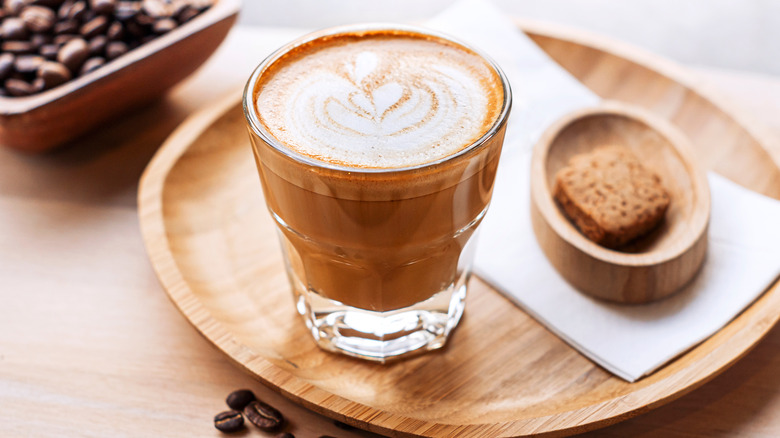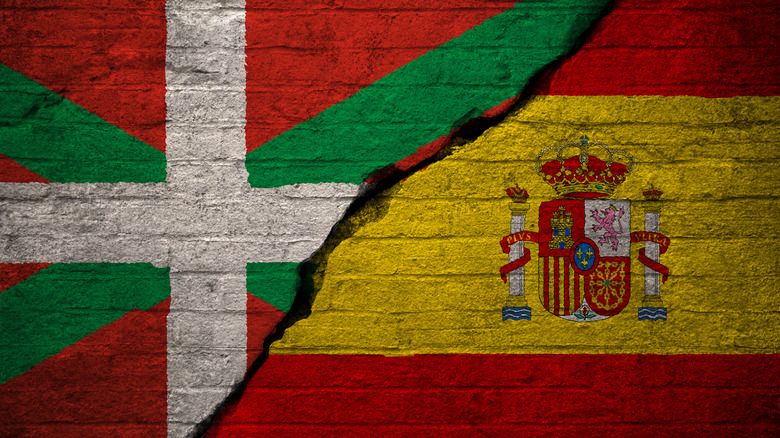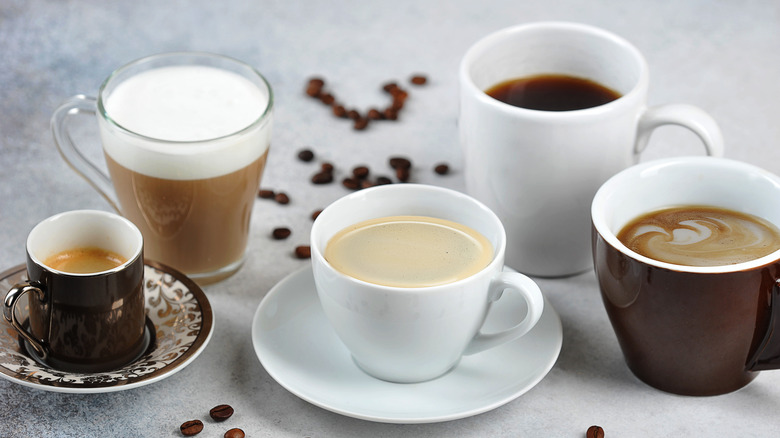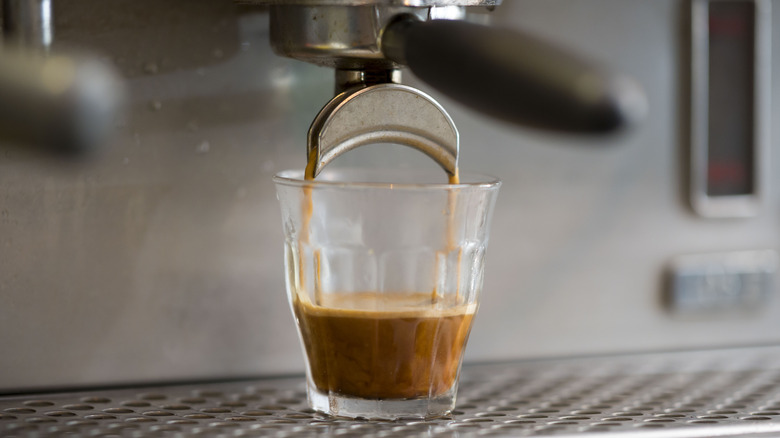Cortado: The Espresso Drink You Should Try On Your Next Coffee Run
The Basque Country region of northern Spain is home to many things: the strikingly modern Guggenheim Museum in Bilbao, nationalist movements, scenic coastal villages, and the north end of the Spanish Pyrenees (via Britannica). Basque Country is also the ancestral home of the cortado, an espresso-based drink that is a staple of Spanish cafe culture. Translated as "to cut" from Spanish, this espresso and milk infusion has developed a reputation of its own here in the States. According to Bon Appetit, by 2013 the cortado's popularity amongst American coffee drinkers was on the rise. It even got its own hashtag: #dailycortado.
What was it in particular that made this coffee drink of the Spanish countryside so popular? Novelty, for one. Cortado is not something you would have expected to find at your average American coffee house. Cappuccinos, certainly. Lattes are a given. And who among us could be without the basic, extra-large drip coffee to help power us through our mornings? The cortado offers a unique coffee-drinking experience. We'll delve into its history, what makes it different from other espresso drinks, how it's made, and how you can order one if it's not on the menu at your favorite coffee shop.
The history of the cortado
The origins of the cortado are not what you would call crystal clear. Not much is known of how exactly it came into being. What is known is that the drink is a creation of the Spanish Basque Country, an autonomous community in the northern part of the country. According to Perfect Daily Grind, the cortado came into being as a way to "cut" the acidity of espresso while retaining its flavor. This cut is achieved with the use of steamed milk.
A proper Spanish cortado is a much different drink than the kind you'll find at a cafe in Brooklyn. According to Bon Appetit, the Spanish treat the cortado as an everyday, everyman drink. There's no "latte art"; no pretense of something special. It's just a drink — a very popular one. You can find a cortado everywhere in Spain. And while the quality of the espresso may not meet the exacting standards of highbrow coffee enthusiasts, the Spanish cortado serves as both an important cultural tradition and the bedrock for the fancier ones you'll find stateside.
What makes a cortado different?
What makes the cortado different from all other espresso-based drinks can be boiled down to one word: ratio. The ratio between espresso and milk is essential for different drinks, but it is particularly important for the cortado. Kaleena Teoh of Coffee Project New York, as quoted in Food & Wine, says, "a cortado is basically a one-to-one ratio of espresso and steamed milk." The typical recipe is two ounces of espresso to two ounces of steamed milk, served in a Gibraltar — a small rocks glass.
To further exemplify this difference, Coffee at Three provides the espresso shot to ounces of milk ratios for the following drinks: cafe latte (one-to-eight), cappuccino (two-to-five), and macchiato (two-to-one). The cortado lies somewhere in between. Not quite as strong as a macchiato, not quite as diluted as a cappuccino or cafe latte. The result is a strong, less bitter, and slightly sweet caffeine cocktail.
How a cortado is made
Making a cortado can be boiled down to a simple, step-by-step process. It can be achieved at any professional cafe or home kitchen equipped with an espresso machine. First, ensure that you grind the espresso beans fresh for optimum flavor. Then, tamp the grinds into a portafilter before putting it into the machine. While the espresso is brewing, prepare the milk for steaming. Using a frothing pitcher, steam the milk until the pitcher is warm and the milk begins to foam slightly. Pour over the espresso and serve immediately (via MasterClass).
If there isn't a professional cafe near you and you don't have an espresso machine, you can easily order a cortado at Starbucks, despite it not being on the menu. As Coffee at Three says, simply order a double espresso with two ounces of steamed milk on top. While it won't necessarily be a proper cortado, the resulting product will no doubt make you yearn for the real thing. Perhaps a trip to Spain is in order.



